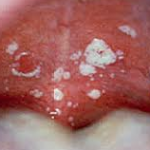 Hello Everyone,
Hello Everyone,
I had a great comment come through the student comment section this week and thought it might help others if I shared my response.
So, the student asked,
” Some questions on your test seemed to give incomplete or misleading information, in my opinion. Such as the one referring to a man who is unresponsive and not breathing normally. The answer to pass was to give them 30 chest compressions yet if someone is not breathing NORMALLY it leads me to believe that they are breathing and the first thing I would want to do is try and figure out why the breathing is not normal. Not give them chest compressions. Have I checked for a heartbeat? I wouldn’t give chest compressions unless I couldn’t detect a pulse.”
-ProFirstAid.com Student
Here was my response. I hope it helps.
Dear “Student”,
There were a couple of changes in this 2010 ECC/ILCOR and American Heart Association release from the guidelines of 2005. One was that if the person is unresponsive and not breathing “normally” we begin chest compressions. Pretty aggressive I know but this is what the guidelines suggest as best practice. Secondly, basic first aid providers no longer check for pulses in the unresponsive victim. Now, when a lay-rescuer comes upon a person who is unconscious, not breathing or not breathing “normally”, they are to activate EMS(call 911) and begin chest compressions at a rate of at least 100 per minute and at least 2 inches deep. This is to continue for 30 compressions only interrupted long enough to give two full breaths after the head tilt chin lift and then back to the chest compressions. The rescuer is not to stop this process unless the patient begins to respond and become conscious, begins breathing normally again, an AED is available, or if EMS arrives and takes over. CPR is to be provided fast and hard with as few interruptions as possible. So there you have it as stated by the new and latest ECC/ILCOR guidelines.
Now, for my subjective slant on the whole deal. I say, don’t feel bad if you’re a little frustrated. As a licensed paramedic, instructor trainer for CPR, First Aid, ACLS and PALS, it still a bit hard for me to watch the latest recommendations and guidelines put forth by the International Liaison Committee On Resuscitation”. It was hard to watch them throw the proverbial “baby out with the bath water” if you will. I for one believe that people can learn how to perform effective and more advanced assessment if given the correct learning mechanisms by which to learn and retain the information in order to use it well during a real rescue situation. I believe that people are more than capable of providing optimal CPR and First Aid which would include pulse checks. I think that there can be times, though maybe rare, where checking for pulses would be helpful in determining the correct next steps especially when dealing with patients suffering from low blood sugar, or a hard hit to the head which temporarily knocks them unconscious and they stop breathing for some time. I also wonder about the person who has been in cardiac arrest for some time. The person is certainly permanently dead and any resuscitation efforts will not change the patients status because they’ve been dead for more than half an hour or longer. Does the rescuer still perform CPR and Rescue Breathing because the person is not moving, not breathing or not breathing normally? Very difficult for me to believe that a rescuer would have to perform CPR on a person with rigor mortis while waiting for the EMS providers to arrive and confirm time of death.
But, the ECC/ILCOR recommendations were based on some evidence, though from my findings I admit not much, that more people would benefit from these simplified procedures than would suffer any ill consequence. So they made the change.
What helps me to deal with the changes when I don’t agree with them, is that the changes were made by the ILCOR group to “simplify” the procedures of CPR and to hopefully encourage more people trained or not, to get involved and hopefully make a difference in saving more lives. If this is indeed the case and we’ll know in a few years, than I guess it’s worth the bit of frustration that some of us must suffer.
I hope this helped. Please let me know if you have any further questions.
Best Wishes,
Roy
royonrescue@gmail.com




